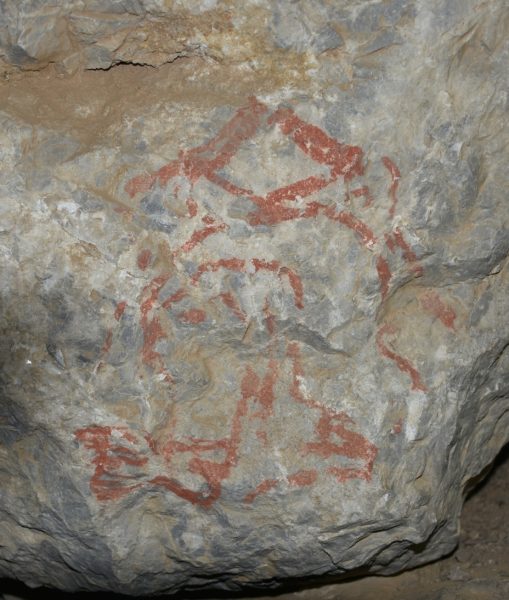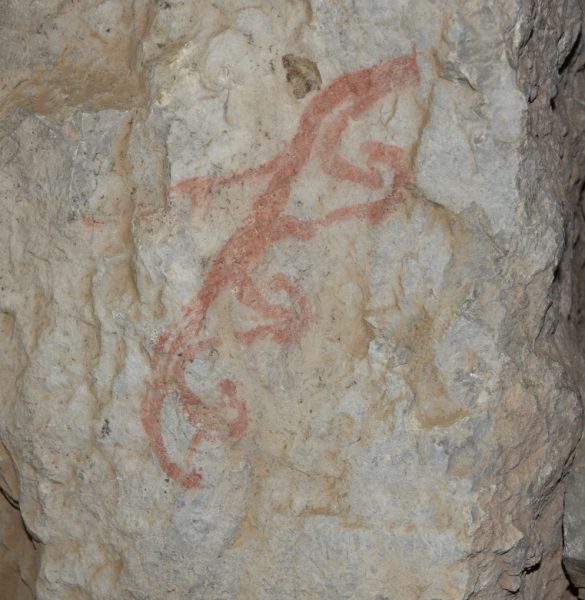About 200 km east of the Turkish capital Ankara, near the small town of Boğazkale (formerly Boğazköy), lie the ruins of the Bronze Age city of Hattusha, the capital city of the Hittite Empire (UNESCO World Heritage Site and UNESCO Memory of the World). In the 2nd millennium BC, this empire dominated large parts of Western Asia and formed a powerful counterpart to Egypt, Babylonia and Assyria. For 116 years, Hattusha has been systematically researched. Currently, an international team of scientists from various disciplines continue work at the site under the direction of Prof. Dr. Andreas Schachner from the German Archaeological Institute in Istanbul with the permission of the Ministry of Culture and Tourism of the Republic of Turkey. The focus of the work programme is excavation, the processing of finds, and restorations. But Hattusha also always has unexpected surprises in store.

As unusual as a rainy day in early August in Central Anatolia, an unexpected discovery was made by Dr. Bülent Genç, a member of the excavation team and senior lecturer in archaeology at Artuklu University in Mardin, at Yerkapı (e. g.: the gate in the ground), a monument in the upper city that has been known since time immemorial. Up to 40 m high and almost 250 m long, the artificially heaped up pyramid-like structure is situated like a crown at the highest point of the city. While the city wall running over this rampart has a gate originally decorated with 4 sphinxes, an underground tunnel – a so-called postern – runs precisely under this gate. The elaborate building, visible from afar, whose Hittite name we do not yet know, was not used for defense, but rather most likely part of cultic ceremonies emanating from the temples located to the north in the city. Unlike all the other monuments and buildings in the city, Yerkapı was always visible and the tunnel at least partially accessible. To this day, it is one of the most important visitor points in the city.
![B19_8506 [Attribution: unknown; Copyright: not defined]](https://www.dainst.blog/daistanbul_blog/wp-content/uploads/sites/20/elementor/thumbs/B19_8506-scaled-punsv1i7rfsi1m2f71qycqrio3gdwmrcqet83da1og.jpg)
It was here that Bülent Genç noticed signs painted with reddish-brown natural paint on the roughly worked stones of the walls in the unlit tunnel. In our ongoing investigations we have discovered traces of at least 249 signs in Anatolian hieroglyphics (pictorial signs) on the stone blocks inside Yerkapı. Although some of them are too eroded to be legible, most are well preserved and clearly readable.

In the Hittite Empire period, Anatolian hieroglyphs are regularly found on rock monuments or seals, either engraved or in relief. The signs discovered in Yerkapı, however, were written on the stone blocks with paint. Until now, painted inscriptions were only known from Kayalıpınar (Sivas) and Suratkaya (Muğla). However, the number of signs found there is extremely small. Through the finds from Yerkapı, it is now becoming increasingly clear that Anatolian hieroglyphic writing was much more widespread in the society of the 2nd millennium BC than was previously assumed. These finds open up a completely new, unexpected window into the Late Bronze Age.

![B19_8749 [Attribution: unknown; Copyright: not defined]](https://www.dainst.blog/daistanbul_blog/wp-content/uploads/sites/20/elementor/thumbs/B19_8749-puo09t39dqzni5wysxmp1160bp1qq2s3o9myce9o1s.jpg)
In order to document this unique discovery, the hieroglyphs, together with the entire structure, are being digitally recorded and modelled in three dimensions in collaboration with colleagues from the University of Federico II – DiSTAR (Naples; L. Repola and his team). According to initial evaluations of our team’s philologists (M. Alparslan and M. Marazzi), there are at least eight different groups of signs repeated in the Yerkapı postern; for example, one of the groups has been identified 38 times so far. The signs obviously do not form a coherent inscription, but rather short notations in the sense of graffiti. Although it is too early to make a final assessment, we assume that names of persons or gods, as well as perhaps the designation of the underground passage in Hittite period, are mentioned.
The work is taking place in Boğazköy/Hattusha as part of the general multidisciplinary research project funded by the German Archaeological Institute (DAI), the German Research Foundation (DFG), the Thyssen Foundation, the GRH Foundation and the Italian Ministry of Foreign Affairs. Colleagues from the DAI, the University of Istanbul and the Universities of Federico II and Suor Orsola Benicasa (both in Naples) are working together on the documentation and interpretation.
Author: Andreas Schachner, Leader of the Boğazköy Excavation
